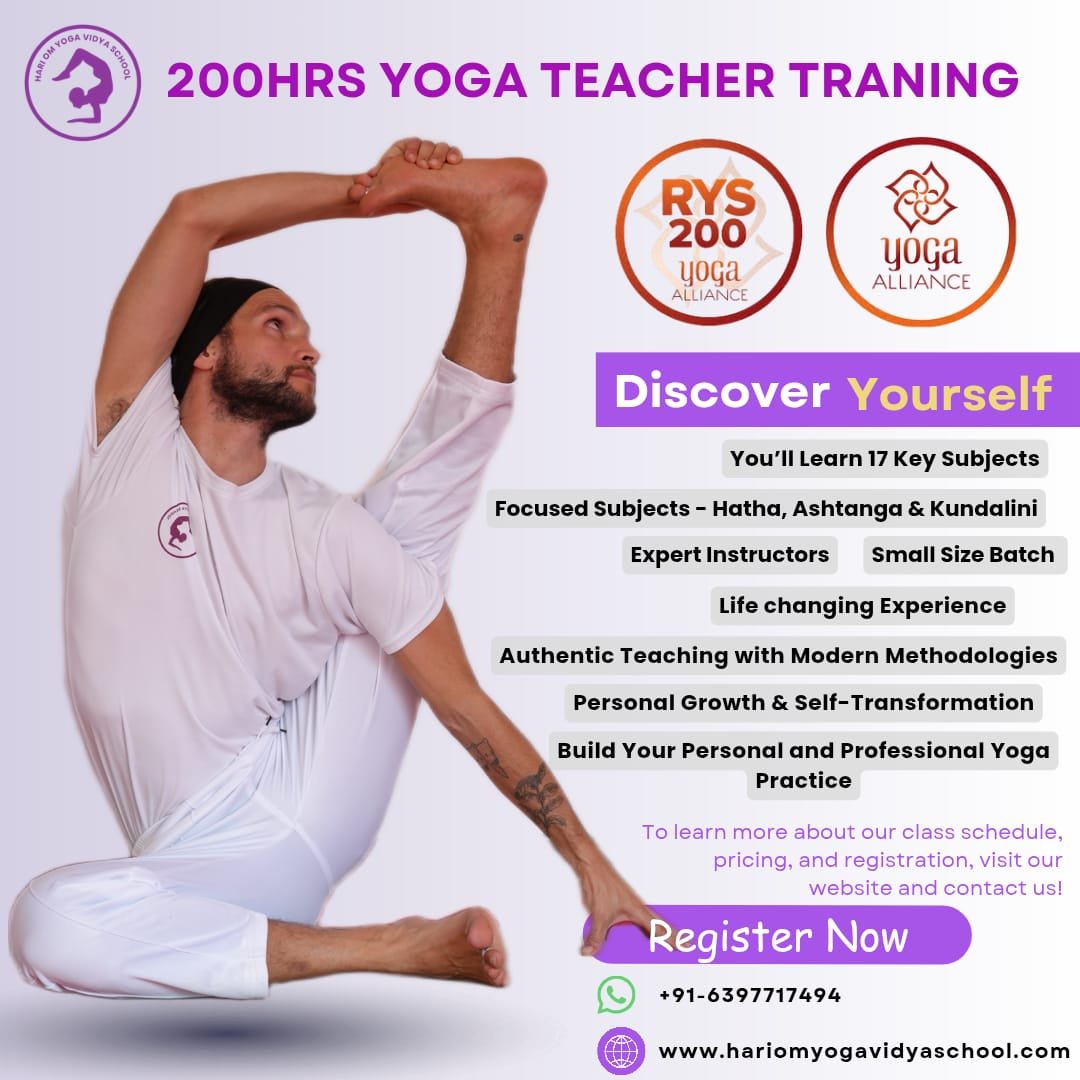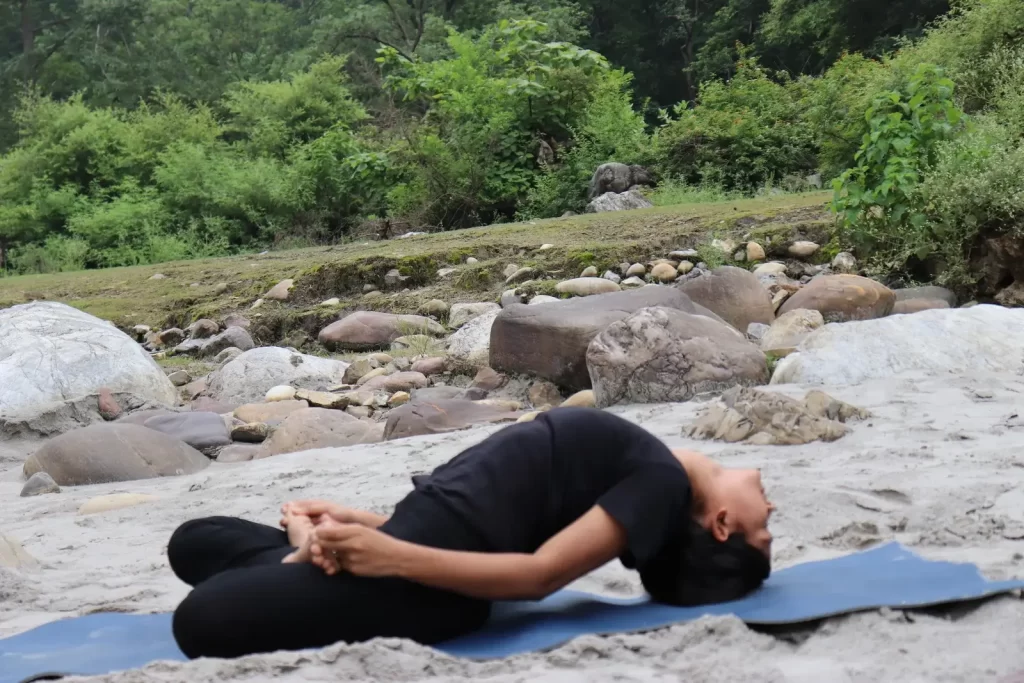Setubandhasana – Bridge Pose
Setubandhasana is one of the back-bending asanas, that new students can perform. It is an asana or pose, which you can learn at any time, throughout your life. It is one of the favourites for most students, who want to awaken their senses. You can get your hips and legs strengthened, along with the heart and spine, through the practice of this asana. You can also explore the entire body through Setubandhasana . The mind can be calmed down and also energized through this asana.

The name of the asana has been derived from Sanskrit. You can break it down as given underneath.
- Setu means ‘bridge’
- Bandha means ‘lock’
- Asana means ‘pose’
In Setubandhasana , the body looks like a bridge. So, the above name is just apt.
How To Do The Setubandhasana?
You can do the asana quite easily. But initially it is better to perform the asana or pose, on the guidance of an experienced yoga expert.
- You have to ensure to lie down on the yoga mat. You should feel comfortable in the pose.
- After that, you need to bend your knees and lift your buttocks upwards from the ground. Your feet should be firmly planted on the ground.
- You can keep the feet, hip-width apart. Your ankles and knees must be in the same straight line.
- You should place both arms beside the body, on either side. The palms should face downwards.
- Inhale and slowly lift the back, first lower, then middle, and lastly the upper back.
- Roll your shoulders, and ensure that the chin touches the chest. The shoulders, feet and arms should support the body.
- Firm up the buttocks or contract them.
- The thighs should be parallel to one another and also with the floor.
- You can bring both hands together and interlock the fingers, and place them in the gap below the raised torso. Also ensure to push both hands against the floor, and raise the body upwards.
- The body starts emulating the shape of a bridge.
- You can hold this position for 5 breaths or a 1 minute.
- Breathe very slowly and deeply throughout the process.
- Slowly release the pose, by lowering the torso downwards, lowering the buttocks and then the legs.
- Lie down and relax on the floor for some time.
Modifications and Variations
- You can place a folded blanket under the shoulders, and neck to avoid excess stress.
- You can use a block below the shoulders and the lower back. However, someone else has to keep the block beneath the said body parts.
- You can also use a stool or a chair, against the back for added support. The stool or the chair must not be too high.
- You can keep the feet close to the wall, so that the feet do not slip. The knees will get the support needed.
- You can initially support the entire body with bolsters. You should also practice the slow opening of the back muscles.
Once you are comfortable with the pose, you can deepen the pose. To deepen the pose, you have to lift your heels off the floor, and then push the tailbone up, very close to the pubis.
Read More: Why Is Kundalini Yoga Dangerous? The Truth About Its Risks and Rewards
You can also try the Eka Pada variation, with one leg straight up against the ceiling or at an angle of 45-degrees.
You should practice normal breathing while doing the asana. The inhalation for the backbend must be deep. Hold the asana for 5 breaths. You have to gaze at the navel or belly button.
Safety Precautions Decoded
You should ensure to keep certain guidelines in mind, while practising Setubandhasana . They are as given below.
- You should perform setubandhasana or pose on an empty stomach. Or else, you have to wait for at least 4-6 hours after the meals.
- If you have tight shoulders, or feel some kind of discomfort while doing the pose, then you should discontinue.
- Clean and empty your bowels and the bladder, before you practice the asana.
- You can do setubandhasana in the morning and the evening as well.
- When you are doing Setubandhasana for the first time, you have to roll the shoulders under the torso.
- You have to ensure to do the asana carefully, otherwise, you may end up hurting yourself. You should ensure to maintain the natural curve of the neck, which is an important part of the asana or pose.
- Overstretching the neck muscles, may cause pain and discomfort.
- When you are on the floor, lift your heels to the highest level to lift the body and then bring them down firmly planting them on the ground.
Who Can Do This Asana and Who Cannot?
- You have to lift the body and support it on the shoulders, hips and back. If you have neck and shoulder injuries, you may sprain such parts. If you have ankle injury, you should not do the pose. Moreover, this is a back bending pose, so your spine needs to be fit and fine.
- If you do not have any body-breath condition, then you should not practice this asana. The pose involves a lot of breath awareness. Moreover, awareness is important, while practicing this asana.
- If you have cervical spondylitis or a herniated disc, you must avoid this pose.
- Moreover, all those who have high blood pressure, must refrain from practicing this asana.
- Anyone who has undergone knee replacement or has osteoporosis, should avoid this asana or pose.
- If you have severe migraine, you should avoid this pose.
- You should avoid this asana or pose in pregnancy.
Benefits of Setubandhasana
- The bridge pose affects the quads, hamstrings, pelvis and the glutes. When you have to lift the body, based on shoulders and the feet, you have to squeeze the glutes, and also draw in your core muscles. This creates a huge pressure, that leads to proper muscles development.
- The flexibility and range of motion of the body also increases. The problem of sagging shoulders is also solved to a huge extent.
- The shoulder rest on the mat, opens up the chest and shoulders. Thus, chest cavity and lung cavity also expand, so you also get rid of respiratory issues.
- The Setubandhasana pose requires a lot of consciousness and focus, so you are bound to bring in awareness alongside.
- The practice also balances the emotions alongside the physical benefits.
- The asana also stimulates all the organs in the pelvis area, and thus improves their performance.
When you practice Setubandhasana on a regular basis, you can get your body ready for more intense poses.
Deepen Your Yoga Practice with Hari Om Yoga Vidya School
Located in the heart of Rishikesh, Hari Om Yoga Vidya School is a place where ancient yogic wisdom meets modern teaching techniques. As a top yoga school in Rishikesh, we are committed to providing authentic, immersive yoga education in a peaceful, spiritual setting. Recognized as one of the best yoga schools in Rishikesh, we offer structured training programs designed to help you evolve in your practice, whether you are a beginner or an experienced yogi.
If you’re searching for a yoga school in Rishikesh that focuses on holistic learning, experienced teachers, and a supportive community, look no further!
Read More: Everything You Need to Know About Kundalini Yoga Teacher Training
Explore Our Yoga Teacher Training & Retreats
At Hari Om Yoga Vidya School, we offer a range of courses tailored for different levels of practitioners:
✅ 100-Hour Yoga Teacher Training in Rishikesh – A foundational course for those looking to begin their yoga journey.
✅ 200-Hour Yoga Teacher Training in Rishikesh – An internationally recognized certification for aspiring yoga teachers.
✅ 300-Hour Yoga Teacher Training in Rishikesh – Advanced training to deepen your practice and refine your teaching skills.
✅ 7-Day Yoga Retreat in Rishikesh – A rejuvenating escape into yoga, meditation, and self-discovery.
✅ 10-Day Yoga Retreats in Rishikesh – A transformative experience that blends yoga, relaxation, and Himalayan serenity.
Join us for a life-changing experience and become part of our global yoga family! 🌿✨




